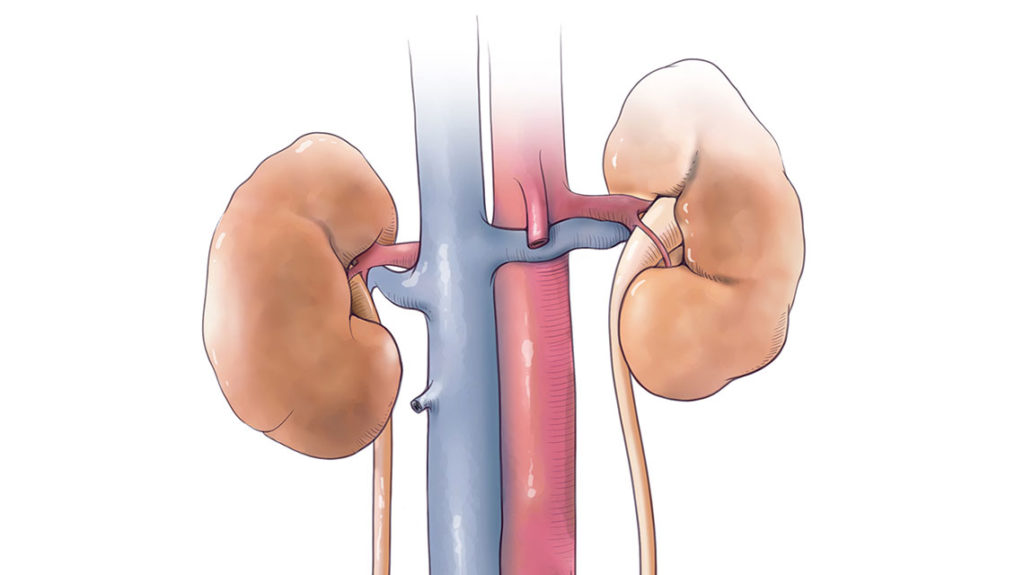Pediatric Kidney Care: A Complex Issue for Low-Resource Nations
Pediatric Kidney Care: A Complex Issue for Low-Resource Nations https://pediatricsnationwide.org/wp-content/uploads/2021/01/Urinary-system-No-Background-kidney-header-1024x575.jpg 1024 575 Eric Butterman Eric Butterman https://secure.gravatar.com/avatar/29a19e70be20db82b98bc00f11c0da1e?s=96&d=mm&r=g- January 26, 2021
- Eric Butterman

Children are dying from kidney disease at alarming rates in low-resource nations. And some procedures that could reduce this high mortality would be considered simple and low-cost for many countries, says William Smoyer, MD, vice president and director of the Center for Clinical and Translational Research in the Abigail Wexner Research Institute (AWRI) at Nationwide Children’s Hospital.
Dr. Smoyer, co-author of a paper in Nature Reviews Nephrology analyzing the issue, has seen this firsthand by participating in the International Society of Nephrology’s Saving Young Lives program.
“I have been to Africa multiple times as part of the Saving Young Lives program to try and help (through educating providers),” says Dr. Smoyer. “Sometimes they lack money, sometimes they lack training, sometimes they lack reliable electricity, and many times they lack all of these. It is heartbreaking to see children die from potentially reversible injury to their kidneys, and with this new program we have a clear opportunity to help them improve their care for their children through both education and sustainable program development.”
“It’s important to understand that, compared to children in high-income countries, children in low-income countries die at a far higher rate from acute kidney injury, and that the majority of the time the kidney injury is completely reversible,” he says, adding that leading factors for their acute kidney injuries are malaria, viral diarrhea and snake bites. “It’s partly a problem of lacking the diagnostic testing to identify acute kidney injury early so it can be treated conservatively. Children oftentimes present or get diagnosed late, when their kidney function has already almost stopped and they have almost no urine output.”
In the review, Dr. Smoyer cites a survey of doctors, clinical officers and nurses in Malawi related to knowledge and confidence when it came to managing acute kidney injury patients. The survey revealed that half didn’t receive any training related to acute kidney injury management.
“If the children were able to receive acute kidney replacement therapy for even 2-4 weeks many of them would be able to have complete recoveries,” he says.
One of the areas of training that can help, Dr. Smoyer says, is using improvised catheters (i.e. drainage catheters, IV catheters, etc.) for acute peritoneal dialysis, a technique that can be performed in almost any clinical setting, including without the need for electricity.
But he points out there are additional resource challenges for children in low-resource settings, as children are often denied access to acute dialysis care, while adults and those able to pay directly for services are able to receive the needed care.
Dr. Smoyer estimates the Saving Young Lives program has already saved about 500 children so far and this further illustrates how this situation can be improved through the help of nephrologists and other medical personnel to participate in the training sessions and/or donate acute dialysis catheters. He reminds that the program stresses the importance of also teaching health workers the critical importance of advocacy, because many leaders in low-resource countries just don’t know how bad the problem is or how cheaply programs to treat acute kidney injury can be implemented that can significantly reduce the mortality among their most vulnerable citizens.
“We need to get the word out because we now know that sustainable programs to reduce mortality among children with acute kidney injury in low-resource areas can be successfully implemented, are cost effective and are highly effective in reducing unnecessary deaths in children with reversible kidney injury,” he says. “These children are dying, and it doesn’t have to be this way.”
Reference:
McCulloch, M, Luyckx, VA, Cullis B, Davies, SJ, Finkelstein, FO, Yap, HK, Feehally, J and Smoyer, WE. Challenges of access to kidney care for children in low-resource settings. Nature Reviews Nephrology. 2020 Oct 1. [Epub ahead of print]
Image credit: Nationwide Children’s
- Posted In:
- In Brief



